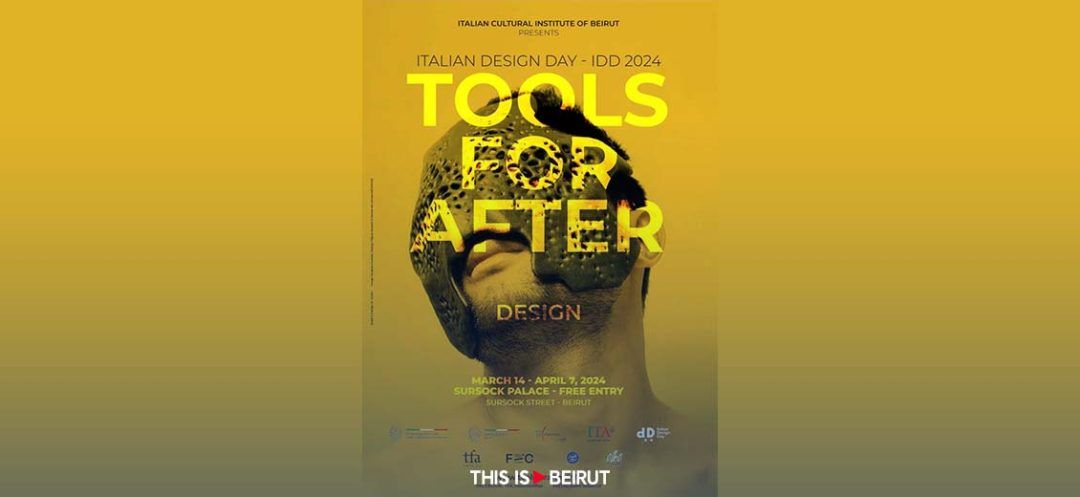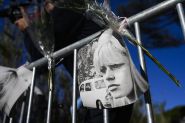
The Italian Cultural Institute (IIC), in collaboration with the Sursock Palace Association and the Académie Libanaise des Beaux-Arts (ALBA), recently announced the exhibition Tools for After Design (TFA Design). This event is held in conjunction with the Italian Embassy in Beirut and the Italian Trade Agency as part of the eighth edition of Italian Design Day (IDD) worldwide. The exhibition is scheduled to take place at Sursock Palace from March 14th to April 7th, 2024, and aims to celebrate and explore the innovation of design culture in Italy.
The Tools for After Design exhibition is organized into four thematic sections, each delving into different aspects of design and its impact on contemporary life and future possibilities. The first section, LYFE: Objects with a Soul, draws inspiration from the work of astrobiologists Stuart Barlett and Michael Wong. It reevaluates the concept of life, showcasing objects that embody living elements such as animals and plants, thereby challenging traditional notions of existence. The second section, PALEO: Echoes of Prehistoric Influence, investigates the lasting influence of prehistoric dynamics on modern culture. It emphasizes humanity's inherent connection to its primal origins, highlighting elements such as mobility, agility, and the importance of communal storytelling as fundamental human traits. In the third section, TOOLS: Imagining Changes Reality, the focus shifts to the transformative power of the imagination. Through a display of inventions, strategies, and alternative materials, this section demonstrates how innovative thinking can drive progress across various fields. The final section, MAPS: Navigating Boundaries and Beyond, examines the role of mapping in understanding and transcending boundaries. It explores how maps shape our perception of space, facilitate exploration, communication, and cultural exchange, and encourage a reevaluation of our relationship with the world.
Tools for After Design exemplifies Italian innovation, featuring over 44 objects meticulously curated to represent the visionary work of a new generation of designers. These objects, crafted using pioneering materials and strategic approaches, are presented as solutions to the challenges of the Anthropocene era, questioning the role of design in addressing contemporary environmental issues. This exhibition transcends the mere display of aesthetically pleasing design; it presents a range of ideas, solutions, and technologies that challenge the prevailing paradigm of mass consumption, programmed obsolescence, and industrialized production. Instead, it advocates for a return to the essence of human creativity, curiosity, and ecological consciousness.
The featured objects embody a forward-thinking ethos, rooted in an understanding of our biological heritage and a commitment to sustainable living. In addition to showcasing products, the exhibition includes cutting-edge prototypes, projects, scenarios, and proposals aimed at tackling sustainability challenges. It also features selected projects by students from design and architecture schools, representing the innovative proposals of the next generation of designers. A highlight of the event is the anticipated participation of distinguished guest speaker Francesca Parotti, whose insights are expected to enrich the dialogue surrounding sustainable design practices and the future of creativity in the Anthropocene age.
Angelo Gioè, Director of the Italian Cultural Institute of Beirut, emphasized the exhibition's significance, stating, "The future has changed. 'Tools for After' is a laboratory of ideas for drawing a collective map of the Anthropocene imaginary, a collaborative exploration of solutions and ways of dealing with daily practice. It is an appeal to utopia to build a survival manual for future generations. TFA calls to Italian creativity to answer questions that concern the entire planet, involving sectors in which Italy is internationally recognized for the style and originality of its proposals. From designing villages on the Moon and Mars to studying new materials, Italy is at the forefront of beauty as well as innovation."
The Tools for After Design Exhibition promises to be a captivating convergence of creativity, sustainability, and forward-thinking design philosophy.
The Tools for After Design exhibition is organized into four thematic sections, each delving into different aspects of design and its impact on contemporary life and future possibilities. The first section, LYFE: Objects with a Soul, draws inspiration from the work of astrobiologists Stuart Barlett and Michael Wong. It reevaluates the concept of life, showcasing objects that embody living elements such as animals and plants, thereby challenging traditional notions of existence. The second section, PALEO: Echoes of Prehistoric Influence, investigates the lasting influence of prehistoric dynamics on modern culture. It emphasizes humanity's inherent connection to its primal origins, highlighting elements such as mobility, agility, and the importance of communal storytelling as fundamental human traits. In the third section, TOOLS: Imagining Changes Reality, the focus shifts to the transformative power of the imagination. Through a display of inventions, strategies, and alternative materials, this section demonstrates how innovative thinking can drive progress across various fields. The final section, MAPS: Navigating Boundaries and Beyond, examines the role of mapping in understanding and transcending boundaries. It explores how maps shape our perception of space, facilitate exploration, communication, and cultural exchange, and encourage a reevaluation of our relationship with the world.
Tools for After Design exemplifies Italian innovation, featuring over 44 objects meticulously curated to represent the visionary work of a new generation of designers. These objects, crafted using pioneering materials and strategic approaches, are presented as solutions to the challenges of the Anthropocene era, questioning the role of design in addressing contemporary environmental issues. This exhibition transcends the mere display of aesthetically pleasing design; it presents a range of ideas, solutions, and technologies that challenge the prevailing paradigm of mass consumption, programmed obsolescence, and industrialized production. Instead, it advocates for a return to the essence of human creativity, curiosity, and ecological consciousness.
The featured objects embody a forward-thinking ethos, rooted in an understanding of our biological heritage and a commitment to sustainable living. In addition to showcasing products, the exhibition includes cutting-edge prototypes, projects, scenarios, and proposals aimed at tackling sustainability challenges. It also features selected projects by students from design and architecture schools, representing the innovative proposals of the next generation of designers. A highlight of the event is the anticipated participation of distinguished guest speaker Francesca Parotti, whose insights are expected to enrich the dialogue surrounding sustainable design practices and the future of creativity in the Anthropocene age.
Angelo Gioè, Director of the Italian Cultural Institute of Beirut, emphasized the exhibition's significance, stating, "The future has changed. 'Tools for After' is a laboratory of ideas for drawing a collective map of the Anthropocene imaginary, a collaborative exploration of solutions and ways of dealing with daily practice. It is an appeal to utopia to build a survival manual for future generations. TFA calls to Italian creativity to answer questions that concern the entire planet, involving sectors in which Italy is internationally recognized for the style and originality of its proposals. From designing villages on the Moon and Mars to studying new materials, Italy is at the forefront of beauty as well as innovation."
The Tools for After Design Exhibition promises to be a captivating convergence of creativity, sustainability, and forward-thinking design philosophy.
Read more



Comments